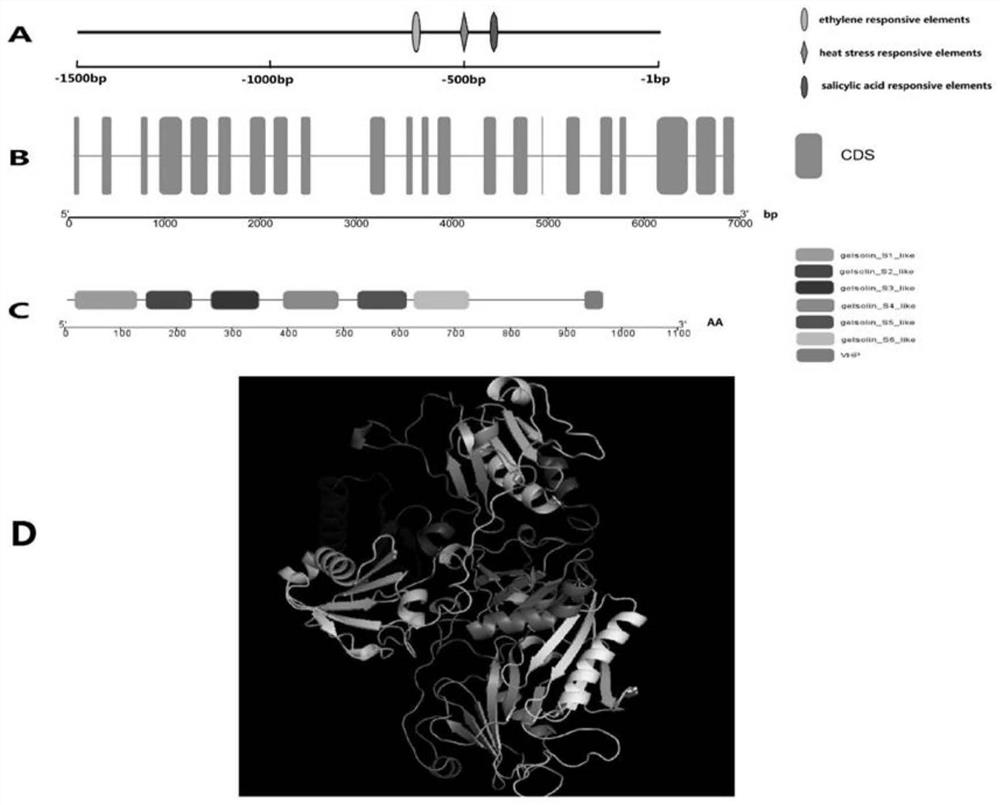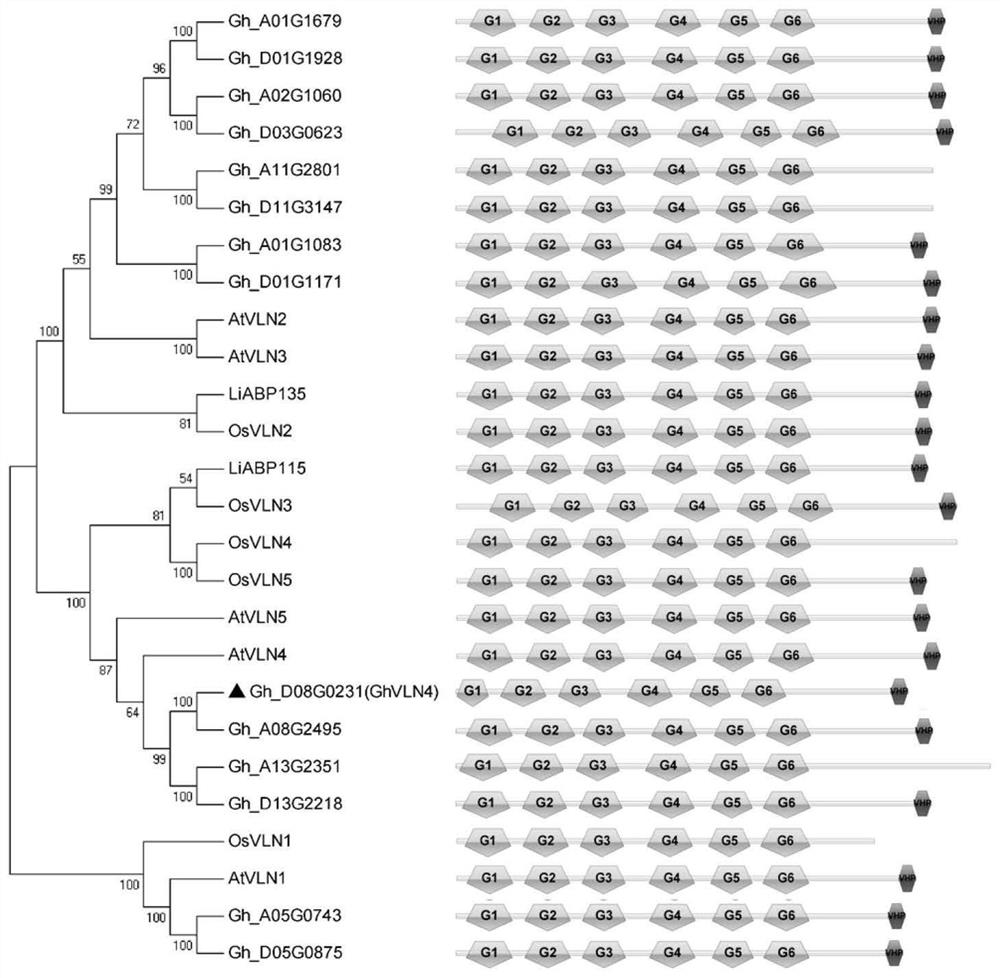Application of cotton ghvln4 gene in resistance to Verticillium wilt
A technology for resistance to verticillium wilt and verticillium wilt, which is applied in the field of genetic engineering and can solve the problems of lack of research and application of microfilament binding protein genes.
- Summary
- Abstract
- Description
- Claims
- Application Information
AI Technical Summary
Problems solved by technology
Method used
Image
Examples
Embodiment 1
[0043] The upland cotton fluff protein GhVLN4 gene is the basis of the present invention, so the cloning and obtaining process of the gene are briefly introduced as follows.
[0044] 1. Cotton GhVLN4 gene cloning
[0045] In this study, Li-1 fiber non-elongating mutants and wild-type WT were used as materials to compare the differences of -3, 0, 4, and 8DPA proteomes and the results of mass spectrometry analysis. In this paper, the matching EST sequence (DW488595) was identified according to mass spectrometry, and the full-length sequence of the gene was obtained by 3' RACE-PCR.
[0046] First, use the CTAB method to extract cotton total RNA. The specific steps are: add 4 mL of CTAB buffer solution to a 10 mL centrifuge tube, take an appropriate amount of ovule sample, grind it with liquid nitrogen and add it to the above tube, shake and mix, ice bath for 10 minutes, and 65 °C water bath for 15 minutes , and mix by inversion 3 times. Add 4mL of chloroform and mix well, and l...
Embodiment 2
[0078] Based on the understanding of the basic characteristics of the gene GhVLN4 in the previous examples, the inventors further analyzed the expression pattern of this gene in cotton tissue and the tissue expression after stress. The relevant experiments are briefly introduced as follows.
[0079] 1. Expression analysis of cotton GhVLN4 gene in different tissues (root, stem, leaf, ovule, fiber)
[0080] The expression of GhVLN4 in different tissues (root, stem, leaf, ODPA ovule, 3 and 6DPA fiber) of wild-type TM-1 and linter mutant Li-1 were analyzed by real-time quantitative PCR. Collect roots, stems and leaves from three-leaf age cotton seedlings, and collect 0d ovules, 3d and 6d fibers at full flowering stage. Cotton total RNA was extracted using the plant polysaccharide and polyphenol RNATIQU kit of Beijing Biotech Biotechnology Co., Ltd., and the reverse transcription kit PrimeScript of TaKaRa Company was used. TM 1st Strand cDNASynthesisKit synthesizes cDNA by reverse...
Embodiment 3
[0091] The inventors used VIGS technology to silence the GhVLN4 gene in cotton plants, and inoculated against Verticillium wilt, so as to study the relationship between GhVLN4 gene and Verticillium wilt. The relevant experimental process is introduced as follows. 1. Construction of VIGS vector containing GhVLN4 gene
[0092] First, design the primer sequence and perform PCR amplification to obtain the GhVLN4 gene sequence. The specific primer sequence is:
[0093] pTRV2-GhVLN4-F: 5'-GCTCTAGAGCTAGAAACCTTTCTACTCCGCCAC-3'
[0094] pTRV2-GhVLN4-R: 5'-CGGGATCCGAACAGTTGAAGAGCCATTTTTAGC-3'
[0095] Secondly, the TRV2 empty vector and the GhVLN4 gene sequence fragment obtained by PCR amplification were double-digested with BamHI and Xba I respectively, and the digested products were recovered and purified, and the above-mentioned digested products were ligated with T4 ligase to construct a recombinant plasmid .
[0096] Transform the above-mentioned ligation product into DH5α compe...
PUM
 Login to View More
Login to View More Abstract
Description
Claims
Application Information
 Login to View More
Login to View More - R&D
- Intellectual Property
- Life Sciences
- Materials
- Tech Scout
- Unparalleled Data Quality
- Higher Quality Content
- 60% Fewer Hallucinations
Browse by: Latest US Patents, China's latest patents, Technical Efficacy Thesaurus, Application Domain, Technology Topic, Popular Technical Reports.
© 2025 PatSnap. All rights reserved.Legal|Privacy policy|Modern Slavery Act Transparency Statement|Sitemap|About US| Contact US: help@patsnap.com



